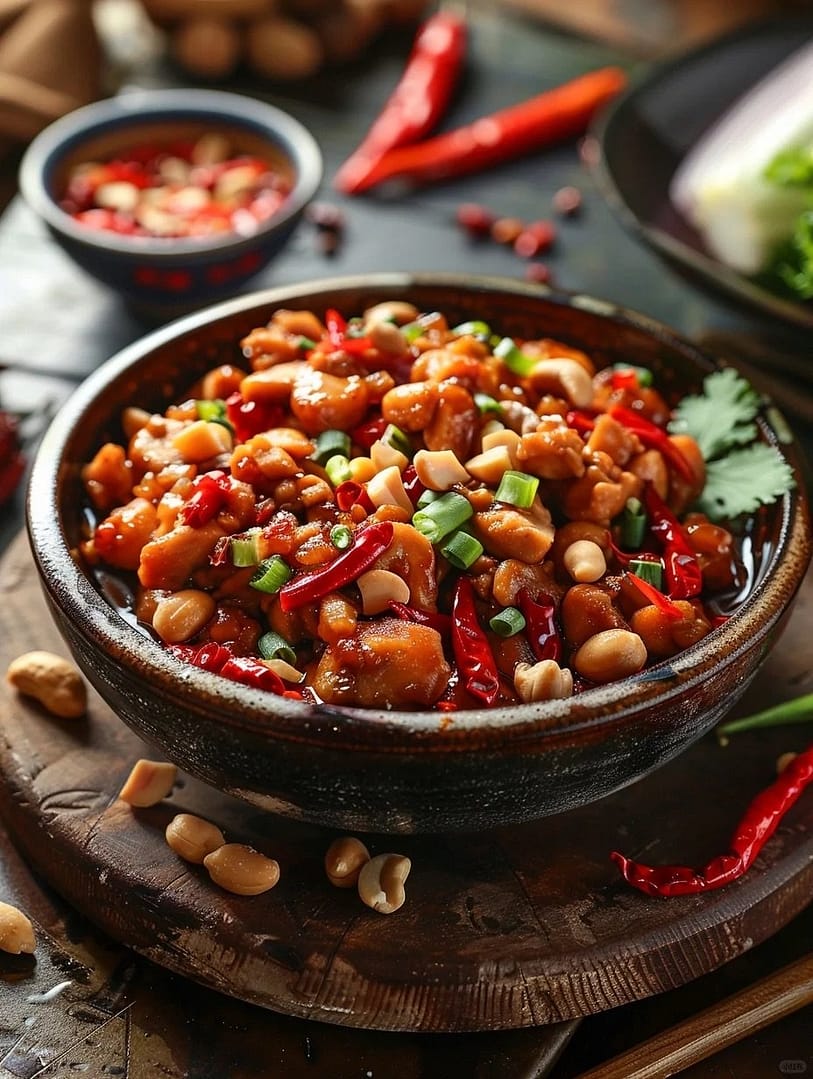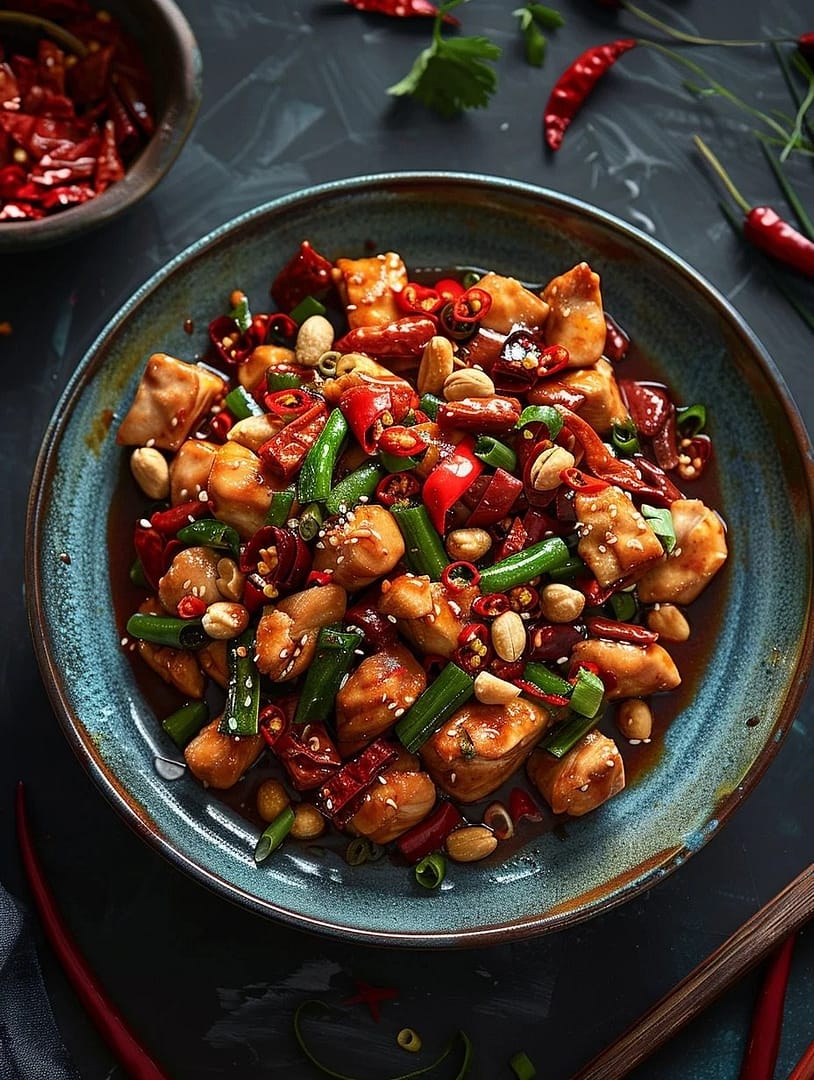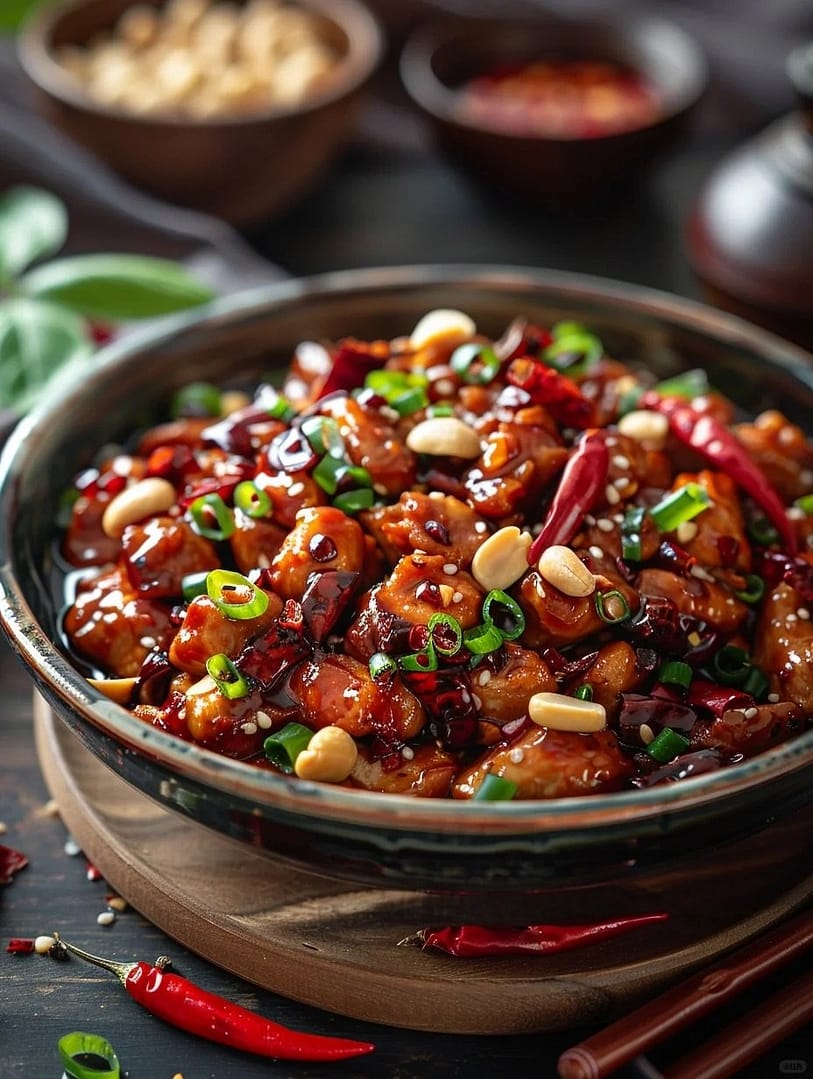
Why Your Kung Pao Chicken Tastes Nothing Like China’s
Let’s face it: Most “Kung Pao Chicken” recipes are a lie.
What you get: Sugary gloop with rubbery chicken and stale peanuts.
What you deserve: Crispy bites of juicy meat, kissed by smoky chilies and the citrusy tingle of Sichuan peppercorns — just like the 1850s Sichuan original.
The problem? Westernized recipes skip the science behind hula (糊辣), the scorched chili aroma that defines real Kung Pao.
Good news: Our Kung Pao Chicken Masterclass video series cracks the code.
✅ The 3-second rule for toasting chilies without burning
✅ How to “velvet” chicken for melt-in-mouth texture (no takeout sogginess!)
✅ The historical hack to balance sweet, sour, and mala (numbing heat)
Ready to turn your kitchen into a Chengdu street stall? Let’s wok this through.

The Global Obsession with Kung Pao Chicken
From New York takeout boxes to Michelin-starred menus, Kung Pao Chicken (宫保鸡丁) reigns as one of the world’s most recognized Chinese dishes. Yet, despite its fame, 89% of home cooks struggle to replicate its authentic hula (糊辣) flavor—the perfect dance of sweet, sour, and numbing heat.
Why?
Westernized recipes often drown the dish in sugar, skip Sichuan peppercorns, or use overcooked chicken. The result? A bland impersonation of the 19th-century Sichuan classic.
The Legacy of Kung Pao Chicken — More Than a Dish
From Qing Dynasty to Your Kitchen
In 1853, Ding Baozhen—a governor of Sichuan famed for suppressing rebellions—hired a chef who transformed humble stir-fry into a culinary legend. Named “Gong Bao” in his honor, this dish became a symbol of power and sophistication.
“Our Kung Pao Chicken history lesson reveals why peanuts symbolize longevity in the original recipe—not the canned veggies added in Western versions.”
The Science of “Hula” Flavor
Authentic Kung Pao relies on three pillars:
1.Dry-frying chilies : Toasting dried peppers until semi-burnt releases smoky depth without bitterness.
2.Sichuan peppercorn oil: Infused oil adds a citrusy mala (numbing) undertone.
3.Velveting chicken: Marinating in cornstarch + Shaoxing wine locks in juiciness.
Kung Pao Chicken — A Bite of Living History
Every bite of Kung Pao Chicken carries a rebel’s spirit—Ding Baozhen’s defiance of bland imperial cuisine. Today, you’re not just cooking. You’re preserving a 170-year-old legacy.
With our tutorials, your kitchen becomes a bridge between Chengdu’s spice markets and your dinner table. The wok is your time machine.
Ready to rewrite your takeout routine?
Click below, and let’s make history—one sizzling stir-fry at a time.



